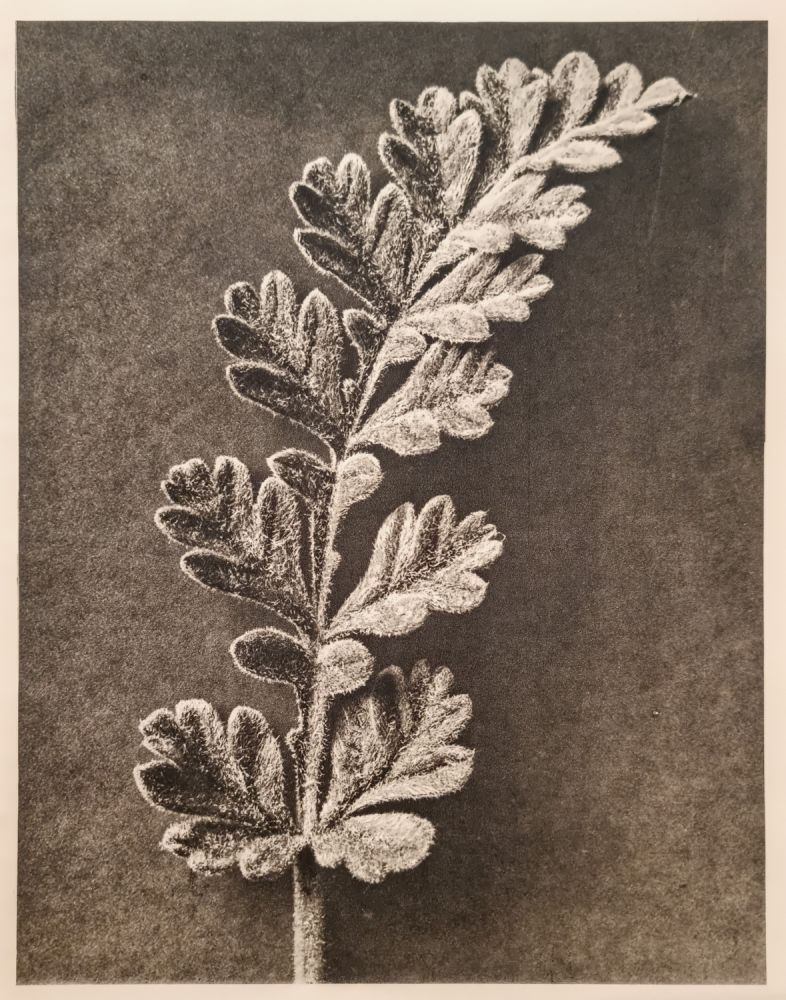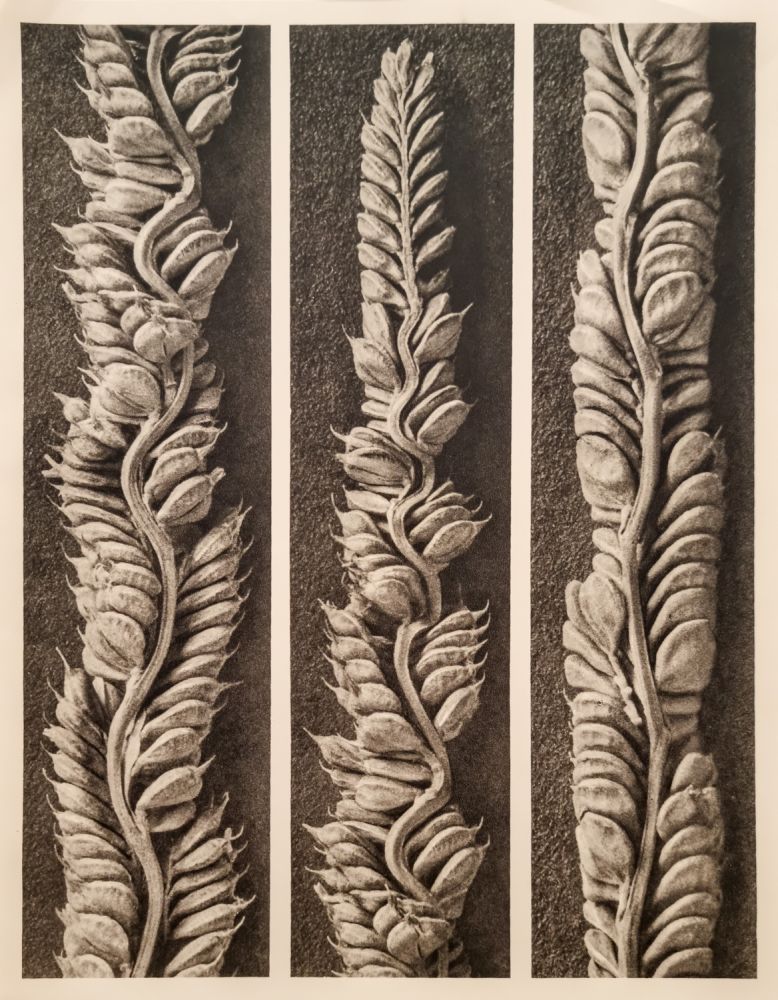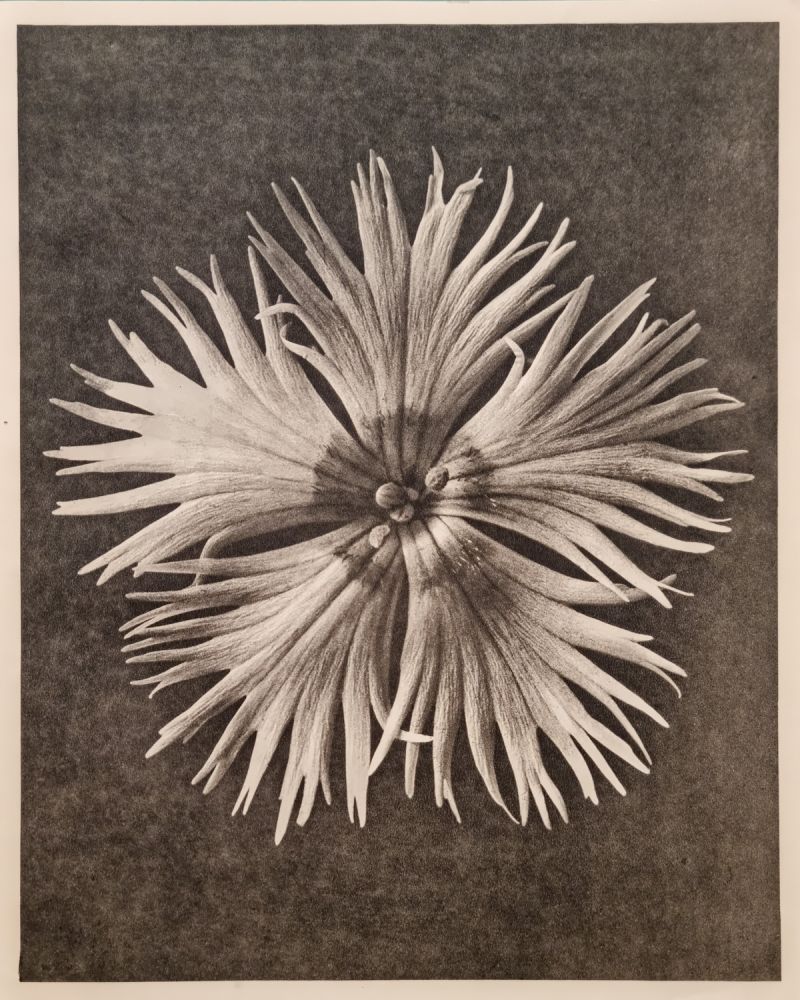"Magnolien. Studie 2"
Gelatin silver contact print (bromide lithprint) on Agfa Borvira 112a (1960s), toned in selenium and gold, hand-colored with albumen glaze inks
signed, dated, edited and stamped on museum cardboard verso
Photographer Martin Waldbauer deals with analog photography techniques and processing methods that are slowly being forgotten. He deliberately set this plant/flower study against a white background, using natural light as illumination and an 8x10 inch large format camera for the shot. The print was made as a contact print, whereby the negative is placed directly onto the photographic paper and exposed. The size of the print thus corresponds to the size of the negative and therefore to the original image in the camera. This very direct way of producing photographic prints has a long tradition and goes back to the first photographs, such as William Henry Fox Talbot's The Leaf of a Plant, from 1844, from the famous book The Pencil of Nature, 1844-1846, plate VII.
Waldbauer uses a particularly old black and white paper from the 1960s as photographic paper. The paper “Agfa Borvira 112a” from the German manufacturer Agfa (Bayer-Leverkusen) is a cardboard-thick, white, semi-matt baryta paper. The first digit (hundreds place) indicates the paper thickness – 1 means cardboard thick. The second digit provides information about the color – 1 stands for white, 2 for chamois and 3 for ivory. The third digit says something about the surface – 1 stands for glossy, 2 for semi-matt, 3 for matt and 4 for noble matt.1
To give the plant a special character, Waldbauer covers the exposure with an egg white glaze. Manual coloring with protein glaze requires great skill, is very time-consuming and does not forgive mistakes. The gelatine of the photo paper is able to completely absorb the dissolved dye components of the protein glaze. As a result, the color “melts” into the gelatine coating of the photographic paper in such a way that the color application is barely visible after drying.2
Waldbauer chose the magnolia, a plant native to East Asia and America. The magnolia, which grows as a shrub or tree, is an ancient, very species-rich plant genus that originated before the development of bees. They are thought to have evolved to encourage pollination by beetles instead.3 Fossilized specimens of magnolia species dating back 20 million years have been found, and fossils of plants clearly belonging to the Magnoliaceae date from 95 million years ago.4 In addition to its use in traditional Far Eastern medicine as a medicinal plant, the magnolia also has numerous symbolic meanings, such as the national symbol of North Korea, the Chinese city of Shanghai and the so-called Magnolia states, the US states of Mississippi and Louisiana. The magnolia plays a central role in numerous songs, films and books or even gives them their title.
(Christoph Fuchs, transl. by deepL)
1
Foto Vogel, Grundlagen der Schwarz-Weiß Fotografie. Die Kennzeichnung von Fotopapieren, http://www.fotovogel-mg.de/Papiere_1.htm (2024-05-04)
2
https://de.wikipedia.org/wiki/Eiweißlasur (2023-11-15)
3
Richard Peigler, A review of pollination of Magnolias by beetles, with a collecting survey made in the Carolinas, 1988 (PDF).
4
P.R. Crane, "The phylogenetic position and fossil history of the Magnoliaceae", 1988, in: David R. Hunt (Hg.), Magnolias and their allies: Proceedings of an International Symposium, Royal Holloway, University of London, Egham, Surrey, 1996, p. 21.






























